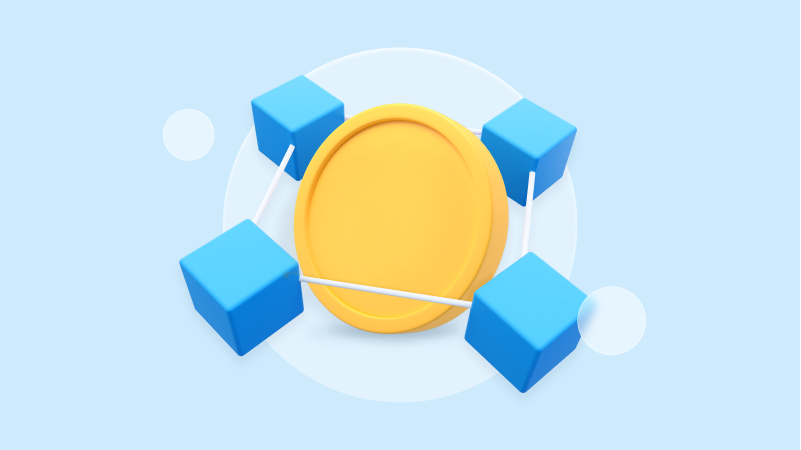The rivalry between traditional and digital financial systems is obvious. The first seeks to maintain control over the money turnover. The second allows you to get rid of it. But even in cryptocurrency, users choose between managed (CeFi) and decentralized finance (DeFi).
Both have the same ultimate goal — to allow customers to buy, sell and multiply cryptocurrencies. However, they have different ways of achieving results. In CeFi, users entrust assets to a centralized exchange (CEX), and in DeFi, to technologies. CeDeFi combines the advantages of managed and open finance. The technology ensures that all the essential DeFi functions will be provided to users with the flexibility and security of CeFi.
What Is DeFi?
DeFi is an ecosystem of decentralized blockchain applications that provide financial services without a centralized management organization. Traditionally, the bank is responsible for the safety and security of its clients’ money and makes transfers between banks, organizations, or people. In the DeFi ecosystem, protocols and smart contracts offered by developers in such applications are responsible for the security and execution of transactions. Since interaction in decentralized ecosystems takes place without intermediaries according to the P2P scheme, market participants independently cope with transactions. This:
- saves time;
- saves money;
- allows you to maintain confidentiality.
DeFi’s mission is to improve the key segments of the banking system: accessibility and transparency of the payment system. This was made possible largely thanks to the Internet and blockchain technologies. The DeFi ecosystem consists of a set of products and services that replace banks, insurance companies, money, stock markets, and other services of financial institutions. Due to the compatibility of mobile apps, users have ample opportunities to combine different services using one mobile wallet.
Key categories of DeFi products:
stablecoins;
exchanges (DEX);
lending and loans;
derivatives;
insurance;
crypto asset management;
payment services;
lotteries and bets.
To date, the lionэs share of DeFi applications is concentrated around: peer-to-peer lending and borrowing, decentralized exchanges, and forecast markets.
What Is CeFi?
Banks and popular payment platforms PayPal, Payeer, and AdvCash are custodial structures with a single governing body. They form the basis of the traditional financial system. Centralization means that a limited number of participants influences changes in the rules and principles of work.
Many popular crypto exchanges and some cryptocurrencies are centralized in nature. For example, the exchange Binance or cryptocurrency Ripple or USDT. For the operation of centralized platforms, private companies must comply with the legal requirements of their jurisdictions. For this reason, when registering on the same Binance, the user must undergo KYC / AML procedures.
Within the framework of CeFi, users are not the sole owners of their funds since their assets are kept under the control of third parties. For this reason, CeFi is often criticized since customers lose their funds when crypto exchanges are hacked. In addition, CeFi restricts clients to only one platform within which the user registers.
Another difference between DeFi and CeFi is the support of fiat gateways. Only centralized platforms have the right to accept and process fiat payments.
What Is CeDeFi?
The term appeared in 2020 due to Binance CEO Changpeng Zhao. This is how the founder of Binance described a solution that combined the capabilities of competing technologies. The functions of CeFi and decentralized projects were first integrated into the Binance Smart Chain network.
Users have the opportunity to invest in verified tokens under the management of a reputable exchange. Despite the objective disadvantages of CEX (verification, vulnerability to hackers), such a solution is relevant since it removes the burden of choosing a project from investors. Binance experts are engaged in analytics.
In addition, in DeFi, investors can choose only one project. There are no such restrictions in CeDeFi. To farm tokens, you need to have an account on Binance. To earn income in the chosen cryptocurrency, it is enough to lock BNB tokens or one of the available stablecoins (USDT, BUSD, DAI).
There is an alternative interpretation of CeDeFi in the community. The co-administrator of the Whalepool pool under the nickname Austerity Sucks considers the technology as one of the spectra of decentralized finance. The arguments are as follows:
The prefix “Ce” automatically cancels the free cash flow. The exchange’s client must store assets in an internal custodial wallet, even if they are locked in a smart contract.
Managed development teams to support any DeFi projects.
Ultimately, the fundamental role of CeDeFi boils down to the fact that companies can introduce novel financial products (which were previously available only in the DeFi space) simultaneously without violating the legal requirements of financial regulators. In simple words, CeDeFi users get access to all DeFi products with cost-effective fees, deep liquidity, and fast transactions.
CeDeFi Benefits
CeDeFi has absorbed the best of both worlds, and this concept offers several significant advantages:
Reducing the risks of fraud. All projects, tokens, and applications are thoroughly tested.
Support for cross-chain transactions. Developers can utilize interoperability and deploy their applications in any blockchain network.
Increased profits. Traders and investors can choose the most profitable products by comparing and filtering the terms, fees, and features.
Reduced fees and increased speed. Initially, it was CeFi that provided users with greater liquidity, lower fees, and faster transactions. In the case of CeDeFi, applications and projects operating within the framework of this concept have minimal fees and almost instant transactions.
